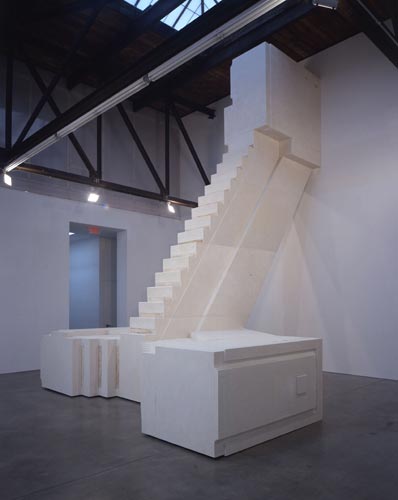
»Untitled (Fire Escape)«, 2002 by Rachel Whiteread.
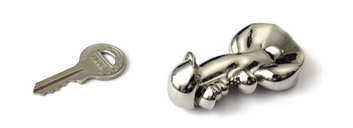
“Morphotheque #13″ – objects transformed by etching and galvanization – by driessens&verstappen.

»LIGHT READING 1500 cinematic explosions«, 2006 by Elizabeth McAlpine . The whitest frame from 1500 different cinematic explosions has been taken and compiled together to make a minute long white flickering movie the sound track has become an agitated micro sound due to the editing process.
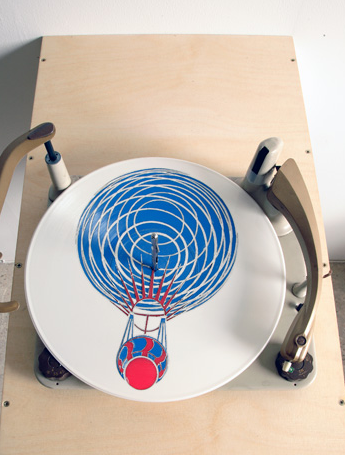
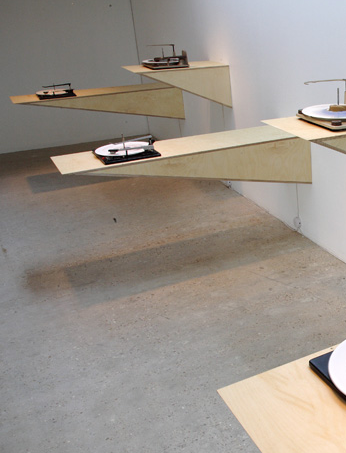
»Quintet«, 2006; Vinyl records, record player, plywood. By Elizabeth McAlpine .
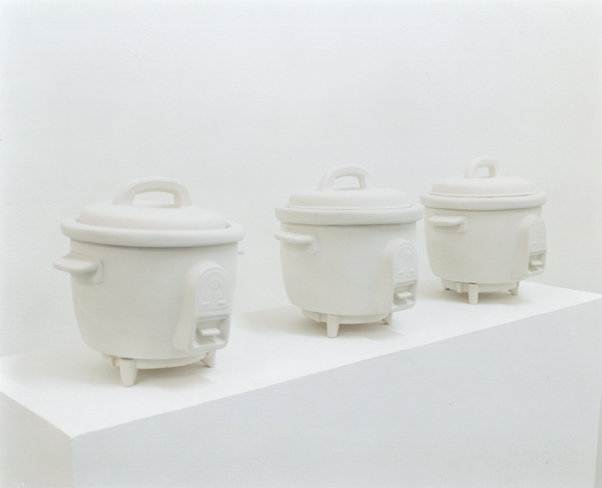
»Wapok«, 2006 (porcelain rice cookers)
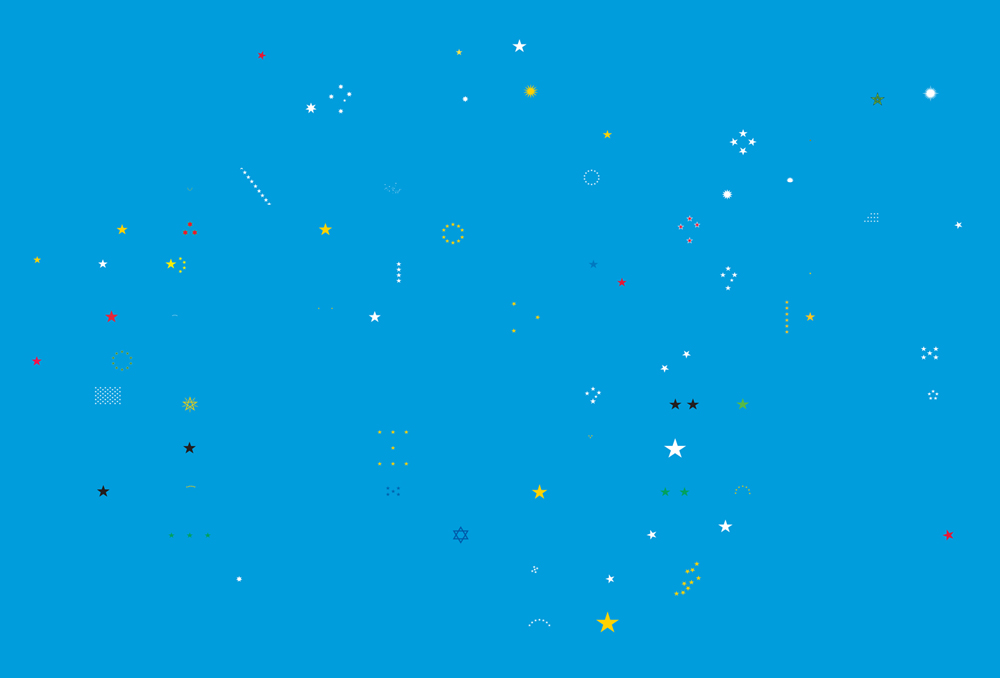
»Epuration élective«, 2004
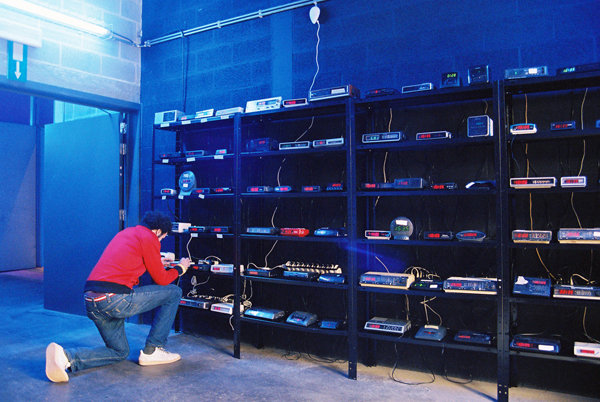
»Snooze«, 2004 (80 radio clocks) by Fayçal Baghriche.
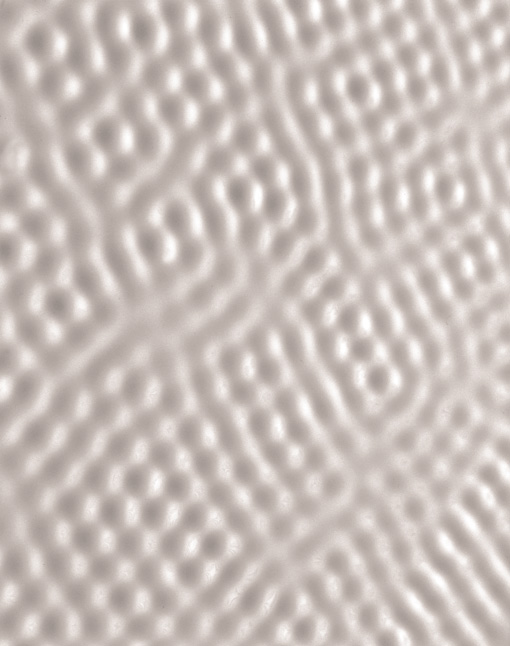
»milch« (2000) by Carsten Nicolai. The basis of milch (milk) is a series of experiments, which examine the relationship between order and disorder by means of a surface of liquid that is under the influence of different frequency-oscillations. In the test series, milk was exposed to sinus waves ranging from 10 to 150 Hz. Sound, almost imperceptible to the ear, appears in this test series as a permanently moving visual structure. Herein the direct interrelation between acoustic signals and visual patterns becomes visible. Lower frequencies make liquids start to move. Dependent on the frequency, different patterns of movement appear. This complex phenomenon causes an interaction of regular and chaotic patterns that can also be compared with acoustic signal interference in a three-dimensional space.
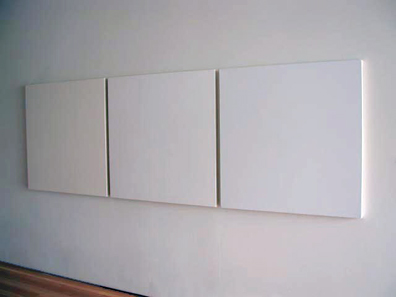
»Wall (Catriona Jeffries Gallery), Wall (Vancouver Art Gallery), Wall (Contemporary Art Gallery), 2005, by Arabella Campbell.

Double Exposure (2007)
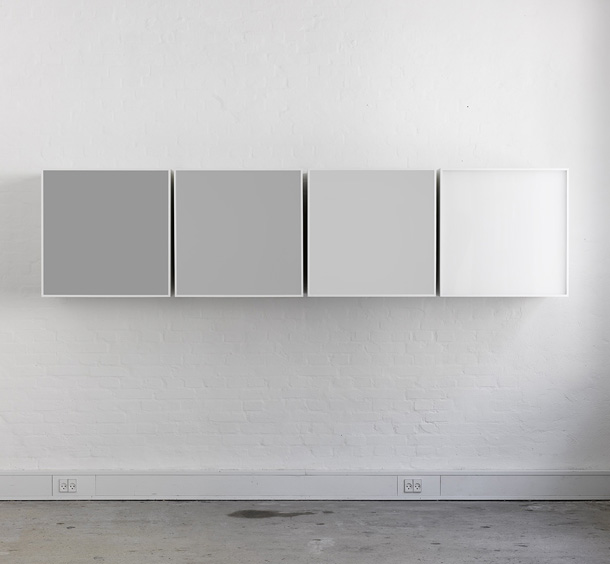

Monochrome Volumes (2007) consists of 4 identical cubic wooden boxes fixed side by side to a wall. Each box has a surface measure of 70 x 70 x 70 cm. The bottom, top, and the sides of the surfaces of boxes are painted with a nonreflecting white grounder. The front of each box is sealed with a 3 mm transluscent acrylic sheets. The inside walls of the boxes are covered with white boards on the top, bottom, sides and on the back. The inner volumes of the boxes are individually set apart because the back board inside each box is fixed in different distances to the front acrylic fronts creating four differentiated inner volumes. A special phenomena occurs by the use of the translucent acrylic fronts on the boxes with variable inner spaces. The acrylic refracts the light (natural sun light, artificial or a combination) that naturally shines through it, throws it into the inner space of the box as a diffuse light. Not being able to see the inner space of the box, the viewer perceives a reflection of its volume in the acrylic in the form of a two dimensional, vibrant, monochrome spatial surface. By AVPD (AVPD © Copyright 2007 / Photography by Anders Sune Berg © Copyright 2007).
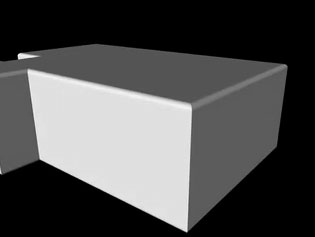
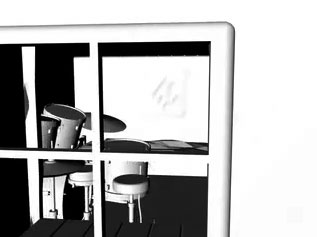
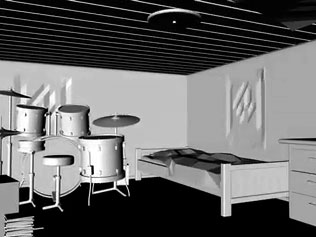
Video “Rapidmemory” by Henny van Nistelrooy. The video shows a complete representation of the artists old bedroom in scale. Again completely made with memory as a guide. Sometimes very accurate and sometimes less precise.
The Bad Guys (The Amazon Noir Crew: Cirio, Lizvlx, Ludovico, Bernhard) stole copyrighted books from Amazon by using sophisticated robot-perversion technology coded by supervillain Paolo Cirio. Amazon Noir by Ubermorgen.
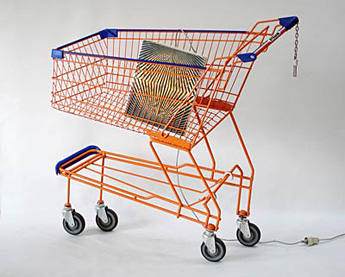
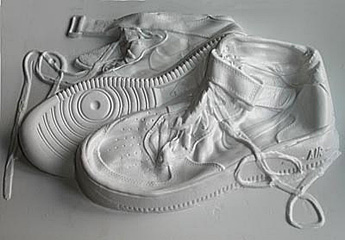
“Opticart” (distorted shopping cart, moiré effect lamp) and “Nike (white)” (polystyrene) by Philip Wiegard.

9 Was 6 If. The two chairs change in colour every 4th minute. What looks like two ordinary chairs on display, is in fact two totally modified replicas holding an internal water system. This allows the chairs to change in temperature, as cold or hot water is pumped through their system. The changing temperature affects the surface of the chairs, coated with thermochrome (heat-reacting) paint. When the chair is cold, it is black, but when heated up it turns white. By Christian Andersson.